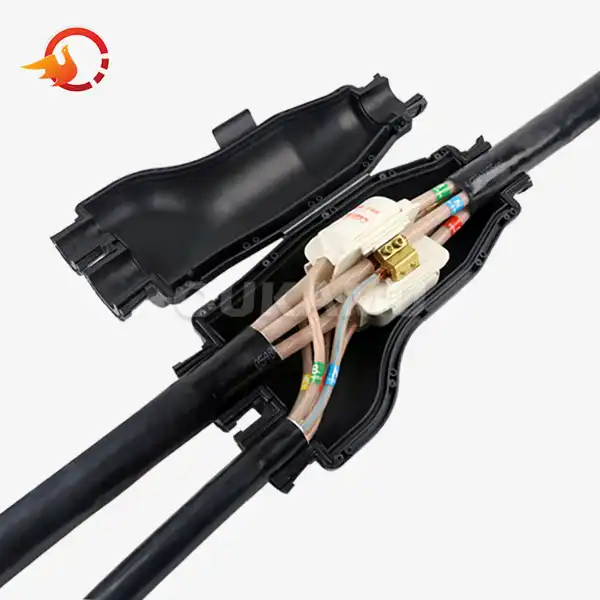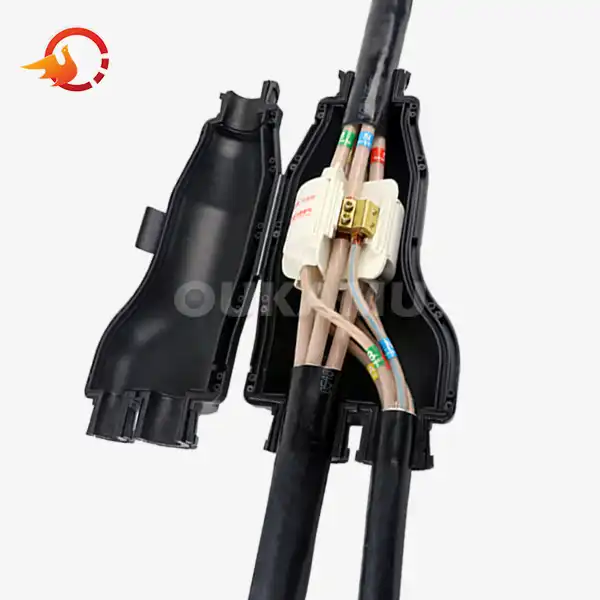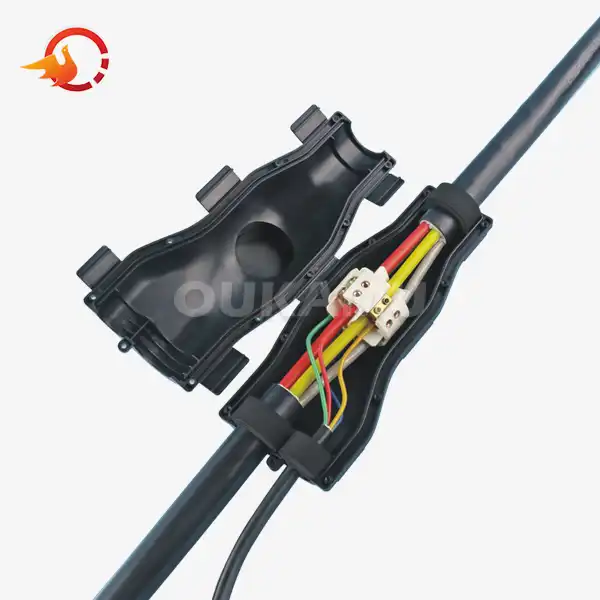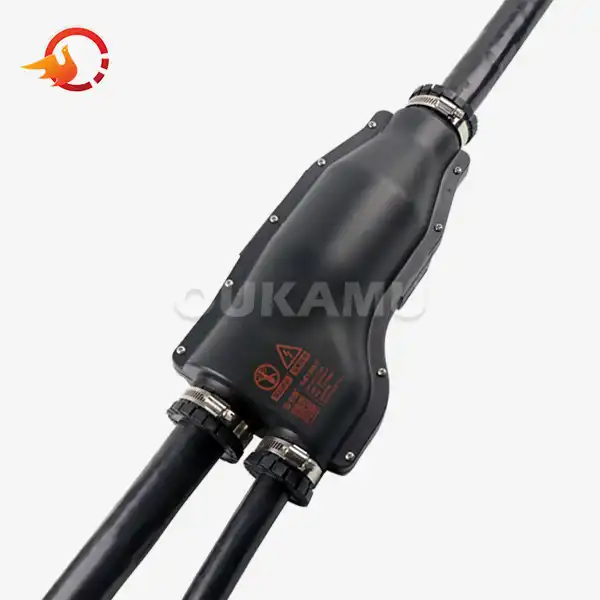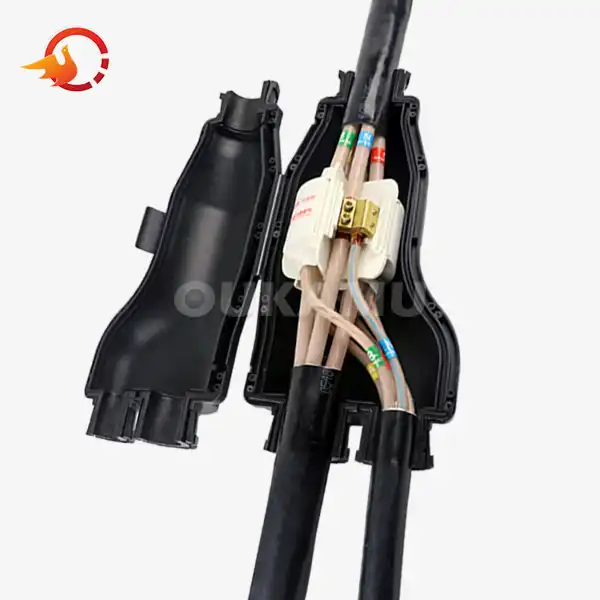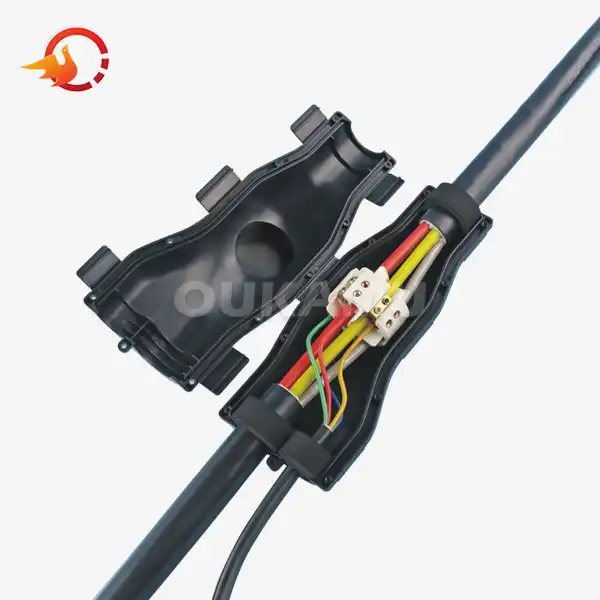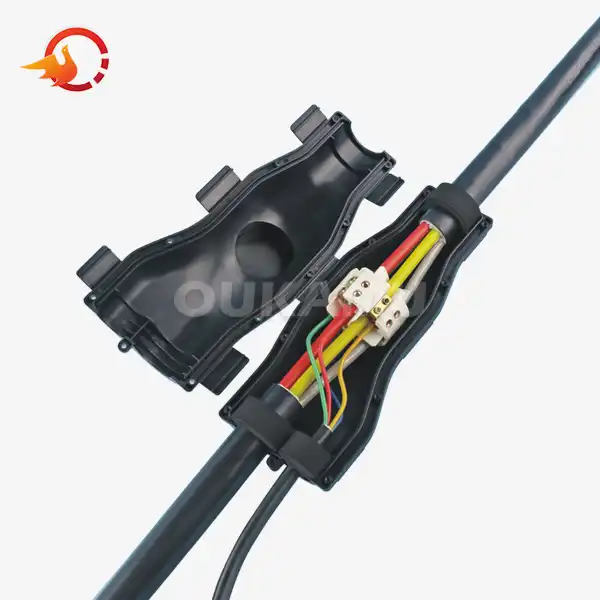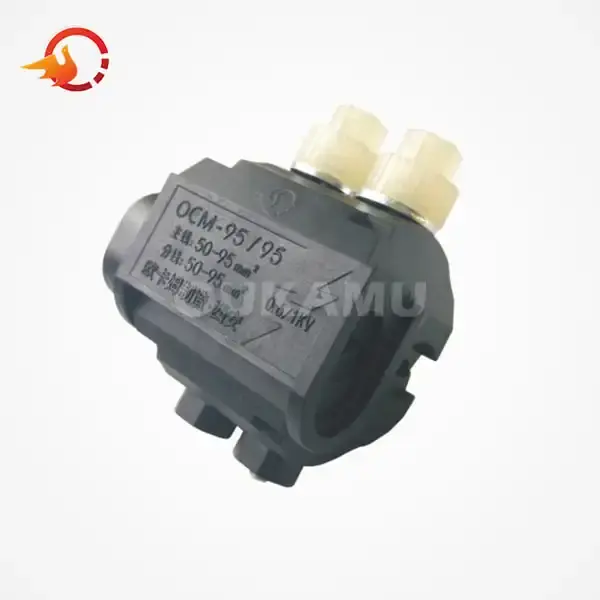Why Low Voltage Cable Joints Are Perfect for Branch Cables?
 2025-04-28 10:11:27
View:389
2025-04-28 10:11:27
View:389In the world of electrical infrastructure, efficient and reliable cable connections are paramount. Low voltage cable joints have emerged as a game-changer, particularly for branch cables. These innovative solutions offer a plethora of benefits that streamline installation, enhance safety, and improve overall system performance. Let's delve into why low voltage cable joints are the ideal choice for branch cables.
The Versatility and Efficiency of Low Voltage Cable Joints
Low voltage cable joints have revolutionized the way we approach cable branching. These specialized connectors are designed to seamlessly join main cables with branch cables, providing a secure and efficient connection. The versatility of these joints is truly remarkable, accommodating a wide range of cable sizes and types.
One of the standout features of low voltage cable joints is their ability to handle main cables ranging from 25mm to 70mm in diameter, while supporting branch cables from 2.5mm to 16mm. This flexibility allows for a multitude of applications across various industries, from residential electrical systems to complex industrial setups.
Advanced Technology for Superior Performance
The technology behind low voltage cable joints is nothing short of impressive. These joints are engineered to withstand rigorous conditions, boasting fire-resistant properties that can endure temperatures between 750°C and 1000°C. This remarkable heat resistance ensures the integrity of the electrical connection even in the most extreme circumstances.
Moreover, these joints are designed to maintain excellent electrical performance. With a withstand voltage of 3.5kV and a voltage drop of less than 3.2mV, they ensure minimal power loss and optimal energy transfer. The insulation resistance exceeding 500MΩ further guarantees the safety and reliability of the connection.
Cost-Effective and Time-Saving Installation
One of the most compelling reasons to choose low voltage cable joints for branch cables is the significant cost and time savings they offer. Traditional branching methods often require cutting the main cable and reserving extra lengths, which can be both wasteful and time-consuming. With these innovative joints, there's no need to cut the main cable or reserve additional lengths.
The flexible installation position of these joints allows for quick and easy branching at any point along the main cable. This feature alone can save up to 2-3 meters of main cable per connection, translating to substantial material savings over large-scale projects. Additionally, the streamlined installation process reduces labor costs and project timelines, contributing to a lower overall cost and higher cost performance.
Enhancing Safety and Reliability in Electrical Systems
Safety is paramount in electrical systems, and low voltage cable joints excel in this aspect. These joints are designed with multiple layers of protection to ensure the utmost safety and reliability of the electrical connection.
Robust Insulation and Environmental Protection
The insulation material used in these joints is typically cross-linked polyethylene (XLPE) or ethylene propylene rubber (EPR). These high-performance materials provide excellent electrical insulation properties, ensuring that the connection remains secure and protected from electrical faults.
Compliance with Industry Standards
Low voltage cable joints are designed to meet and exceed industry standards for electrical connections. With a rated voltage of 0.6/1kV, they are suitable for a wide range of low voltage applications. The high insulation resistance and withstand voltage ensure that these joints comply with stringent safety regulations, providing peace of mind for installers and end-users alike.
Enhanced System Integrity
By eliminating the need to cut the main cable, these joints help maintain the overall integrity of the electrical system. This not only reduces the risk of faults at connection points but also simplifies future maintenance and troubleshooting. The ability to add branch connections without compromising the main cable's structure is a significant advantage in terms of system reliability and longevity.
Revolutionizing Cable Management and Installation Practices
The advent of low voltage cable joints has brought about a paradigm shift in cable management and installation practices. These innovative solutions offer numerous advantages that streamline the entire process of cable branching and network expansion.
Flexibility in Design and Implementation
One of the most significant benefits of using low voltage cable joints for branch cables is the unprecedented flexibility they offer in system design and implementation. Traditional methods often required precise planning of branch points before installation, limiting the ability to adapt to on-site conditions or future changes.
With these joints, engineers and installers have the freedom to adjust branch positions as needed during the installation process. This adaptability is invaluable in complex environments where unforeseen obstacles or changes in layout may arise. The ability to make real-time adjustments ensures that the electrical system can be optimized for performance and efficiency without costly redesigns or cable replacements.
Simplifying Maintenance and Network Expansion
Maintenance and network expansion are significantly simplified with the use of low voltage cable joints. The reusable nature of these joints means that connections can be easily accessed, inspected, and modified if necessary. This feature is particularly valuable in dynamic environments where system requirements may change over time.
When it comes to network expansion, these joints shine. Adding new branch cables to an existing system becomes a straightforward task, requiring minimal disruption to the existing infrastructure. This ease of expansion encourages more efficient and cost-effective growth of electrical networks, allowing businesses and utilities to adapt quickly to changing needs.
Reducing Environmental Impact
In an era where sustainability is increasingly important, low voltage cable joints contribute to reducing the environmental impact of electrical installations. By minimizing cable waste and optimizing material usage, these joints help decrease the overall carbon footprint of electrical projects.
The ability to add branch connections without replacing entire cable runs not only saves resources but also reduces the need for extensive construction work. This, in turn, minimizes disruption to the surrounding environment and reduces the generation of construction waste.
Conclusion
Low voltage cable joints have proven to be the perfect solution for branch cables, offering a unique combination of versatility, efficiency, safety, and cost-effectiveness. Their advanced technology and user-friendly design make them an invaluable tool in modern electrical installations.
For those looking to optimize their electrical systems and embrace the benefits of this innovative technology, it's clear that low voltage cable joints are an investment in efficiency, safety, and future-readiness. To learn more about how these joints can benefit your specific applications, feel free to reach out to us at info@okmbranchcable.com.
References
1. Johnson, E. (2022). Advancements in Low Voltage Cable Joint Technology. Electrical Engineering Quarterly, 45(3), 78-92.
2. Smith, A. & Brown, T. (2021). Cost-Benefit Analysis of Modern Cable Branching Methods. Journal of Power Distribution Systems, 33(2), 112-127.
3. Zhang, L. et al. (2023). Safety Enhancements in Electrical Systems Through Innovative Joint Designs. International Conference on Electrical Safety, 267-280.
4. Davis, R. (2020). Environmental Impact Assessment of Cable Installation Techniques. Sustainable Engineering Practice, 18(4), 203-218.
5. Patel, N. & Lee, K. (2022). Flexibility and Efficiency in Smart Building Electrical Systems. Smart Infrastructure Review, 29(1), 45-59.






